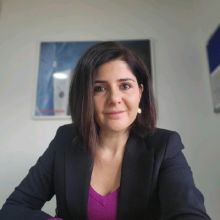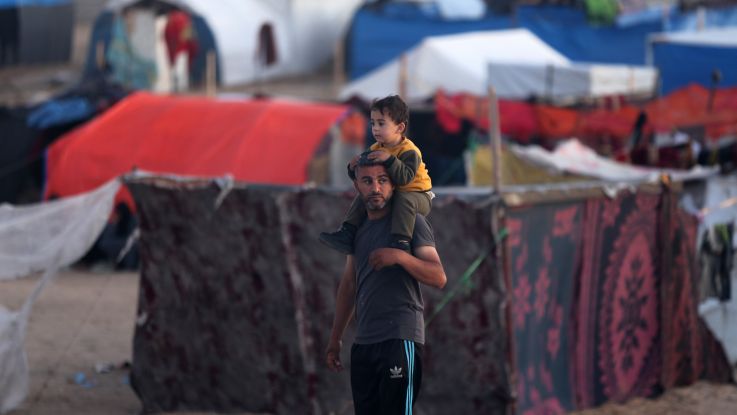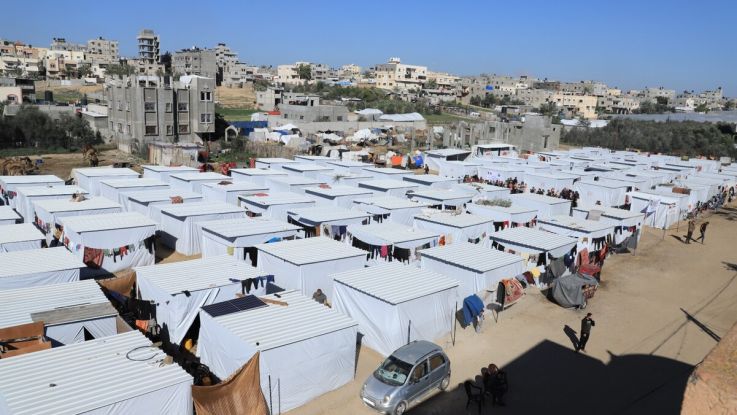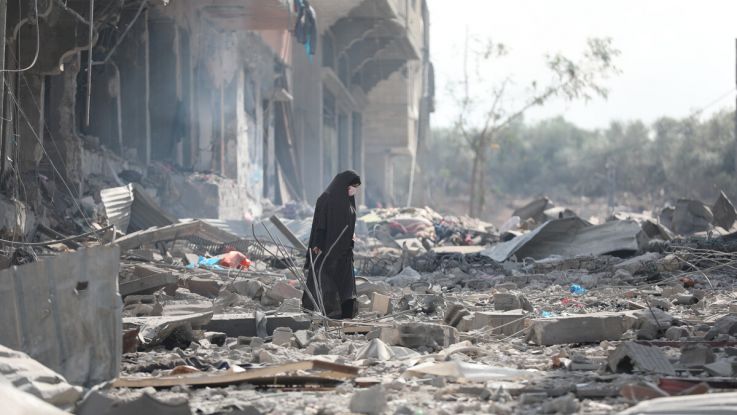Turkey-Syria earthquakes: six months on
25 July 2023
Six months on since two devastating earthquakes hit Turkey and Syria, what is the situation for people who were affected? We explore some of the stories of women and health workers who are bearing the brunt of a growing healthcare crisis in the region.
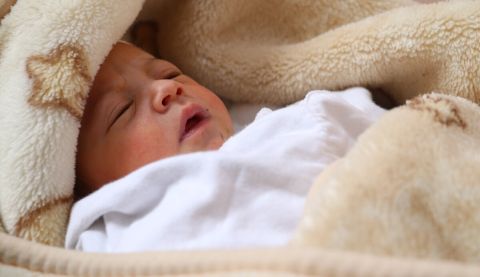
Celine, daughter of Marah, a newborn in the ActionAid-funded hospital in north-west Syria. Photo: Sonya Al Ali Maara / ActionAid
It’s been six months since two powerful earthquakes hit Turkey and Syria in the space of just 12 hours.
More than 55,000 people are estimated to have lost their lives in the quakes, while many more were injured and displaced. More than 54,000 buildings, including hospitals and schools, were destroyed or damaged.
Six months on, the physical tremors may have ceased, but the wider repercussions of this disaster are still sending shockwaves throughout the region.
In North-west Syria, the devastation is most acute. The region is home to over four million people, more than half of whom were already displaced as a result of the ongoing, 12-year civil war in Syria. Before the earthquake, 90% of people in the region were dependent on aid to meet their basic needs.
A ‘crisis within a crisis’, the situation is still critical.
A donation from you could help meet the needs of people affected, many of whom continue to live in temporary camps with little access to food, water or sanitation. £35 could provide one household with a hygiene kit containing essentials like wash buckets, toilet paper, toothbrushes, sanitary pads and soap.
Below are some of the stories of women and healthcare workers who are bearing the brunt of a growing healthcare crisis in the region, and fighting to safely deliver babies amid poverty, extreme heat, shelling, a growing cost of living crisis and precious few resources.
“We were very afraid”: Safaa’s story
Safaa lives in a refugee camp in North-west Syria, because her home was destroyed in the war. She says: “The suffering here is mainly from poverty but also from the cold and heat.”
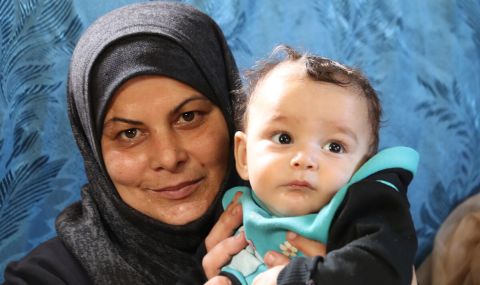
Safaa, a mother of three, with her eight-month-old son, Hudhayfa .
She describes the day of the earthquake: “We had been asleep, and I was breastfeeding my little one and I accidentally dropped him because of how frightened we were.
We were very afraid. The children woke up and started crying, so much crying and they were terrified and started screaming.”
Now, Safaa and her family are getting the care they need at the ActionAid-funded hospital: “They give us medicines and everything we need,” she told us. “You feel that you are at home not in a hospital. They talk to us nicely.
“For the little one, they come and talk nicely and play with him to calm him down and for him to feel comfortable. They are very good doctors.
“Thanks to those who contributed to this hospital, and God bless them.”
Fleeing for safety: Baraa’s story
Baraa is 28 and lives with her daughters in a refugee camp in North-west Syria. They moved here before the earthquakes, to escape bombing in their village.
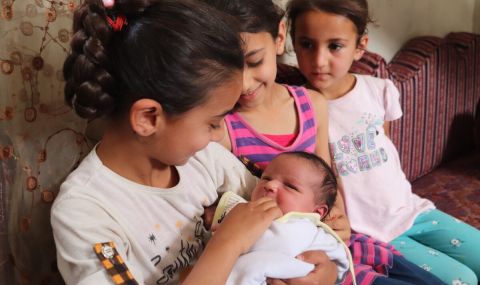
Baraa's daughters lovingly hold their newborn baby sister, Lynn .
When the earthquakes struck, Baraa was pregnant; she gave birth to her youngest child just one week ago. She describes the panic that ensued: “The children were very afraid – afraid it would happen again.”
Baraa is now receiving care at an ActionAid-funded hospital close to the camp where she lives.
"Now the hospital is here it’s closer and better,” she says. “In case one of the children is ill at night, it’s more comfortable, it's free of charge, and the road to get there is shorter.”
Children’s fear of aftershocks: Dr. Osama’s story
Dr. Osama is a paediatrician working in an ActionAid-funded hospital in Syria. He tells us that his workload has rapidly increased since the earthquake – partly due to the mental trauma that’s been caused, but also because of the increase in diseases as camps have become more densely populated.
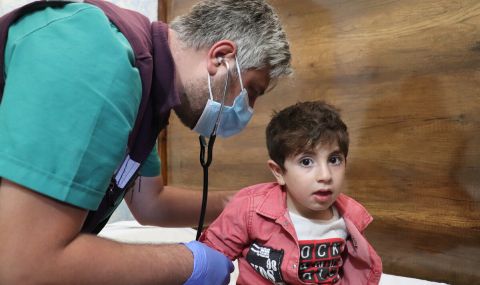
Dr. Osama, a paediatrician in an ActionAid-funded hospital .
“Currently, the biggest danger to children's health after the earthquake is the spread of infectious diseases like measles,” he told us. “Diseases such as lice and scabies are currently being spread.
My work in the hospital can be 24-hour shifts from 8am on one day until the 8am next day.
“The most common operations we perform on children are endoscopies of the wounds caused by the earthquake and to change bandages. We have also performed lingual frenectomy [a surgical procedure used to treat tongue tie] in newborns.”
Despite the pressures, Dr. Osama describes the importance of his work: “The most rewarding work is helping the children. When a child whose condition was bad when they came in leaves well and doesn’t need to be referred to another hospital – that's the best.”
Returning as a surgeon to help: Khadija’s story
Khadija, 35, has been practicing as an assistant surgeon for 15 years. She was away in Turkey when the earthquake happened, and when she saw there weren’t enough medical teams in the region, she stayed behind to treat people with injuries and help pregnant women deliver their babies.
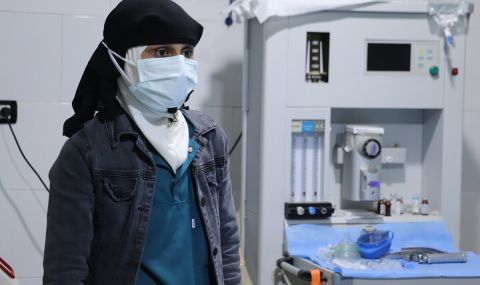
Khadija, 35, has been practicing as an assistant surgeon for 15 years. She returned to the region after the earthquake to work in the ActionAid funded hospital .
Now, Khadija is working at an ActionAid-funded hospital in Syria. She tells us that after the earthquake, she saw an influx of patients experiencing the ongoing effects of crush injuries, and pregnant women who went into early labour because of the earthquake.
In some cases, women were able to see specialist doctors who were able to prevent early labour, but others gave birth to premature babies.
“Unfortunately many premature infants were born and these babies were put into incubators,” she told us.
Some of them improved and their condition was healthy, but some of them died because of how young they were at birth.”
Now, she says diseases are spreading easily in the camps, which threatens pregnant women, new mothers and newborn babies. “There are high temperatures, because tents don't usually protect them from the heat, which can cause fevers and dehydration in babies.”
“The hospital provides pregnant women with vitamins and anti-inflammatory drugs to prevent the spread of infections which can result in premature births.
“We also help to limit the number of miscarriages that occur due to successive pregnancies. Most women give birth and pregnancy occurs immediately afterwards, but at least a difference can be made if family planning methods between pregnancy and the next pregnancy are used.
“So we help the mother to maintain her own body’s health and then that way the next child will also be healthier.”
Khadija describes another critical problem she’s witnessed in the region: child marriage. “[It] causes many health problems for girls,” she says.
They become pregnant before their bodies are ready, at 15 years old or 16 years old, which can result in premature births. Premature babies can’t survive in the conditions they are born into.”
How the healthcare crisis in growing in North-west Syria
These stories provide a snapshot of the ongoing healthcare crisis in North-west Syria, which is putting its 4.6 million civilians at risk.
The cumulative impacts of the conflict and recent earthquakes have decimated sexual and reproductive healthcare, creating both immediate and long-term risks for the 2.2 million women and girls of reproductive age who need such care.
But at this new ActionAid-funded hospital, more than 5,000 women and girls who were displaced by the earthquakes have already received urgent medical care. Many of the healthcare teams have, until recently, worked voluntarily, providing services like intensive care, medical analysis, childbirth and outpatient clinics.
The hospital is a lifeline for all families who depend on it. Teams are stretched and resources are limited, but health care workers continue to protect the fundamental human right to health - including ensuring women are able to deliver a baby safely; to bring new life into the world.
If you can, please consider giving a donation of just £10, which could provide 10 bottles of paracetamol for children.
ActionAid’s wider work in North-west Syria
For the last six months, ActionAid has been working with local partners in Syria to provide emergency and long-term care for those affected by the earthquakes.
This has included shelter, food, medical aid, sanitation, warm clothing, heaters and cash transfers for thousands of people, in partnership with organisations like Freedom Jasmine, Action for Humanity and Space of Peace.
In North-west Syria we partnered with a local organisation named Violet, who were one of the first and only aid agencies operating in this region. This included search and rescue in the rubble of destroyed buildings and distributing warm clothing, blankets and firewood.
We've provided clean water, hygiene kits and washing facilities to over 30,000 people through our partner Action for Humanity.
The role of young people as first responders has been critical in saving lives and supporting recovery: youth volunteers worked tirelessly with Violet to pull survivors from the rubble and reached a staggering 6,330 people through search and rescue operations and emergency medical and mental health care.
Partners have also been carrying out counselling and events like puppet shows and playtime for children in the region - many of whom have suffered severe trauma - and setting up safe spaces for women and girls, in order to prevent and respond to cases of gender-based violence.
Overall our response reached more than 100,000 people. But as this ‘crisis within a crisis’ continues to develop, we need your help more than ever.
Please consider giving a £20 donation today, which could provide a family with a food kit including canned goods, oil and water. Thank you.
